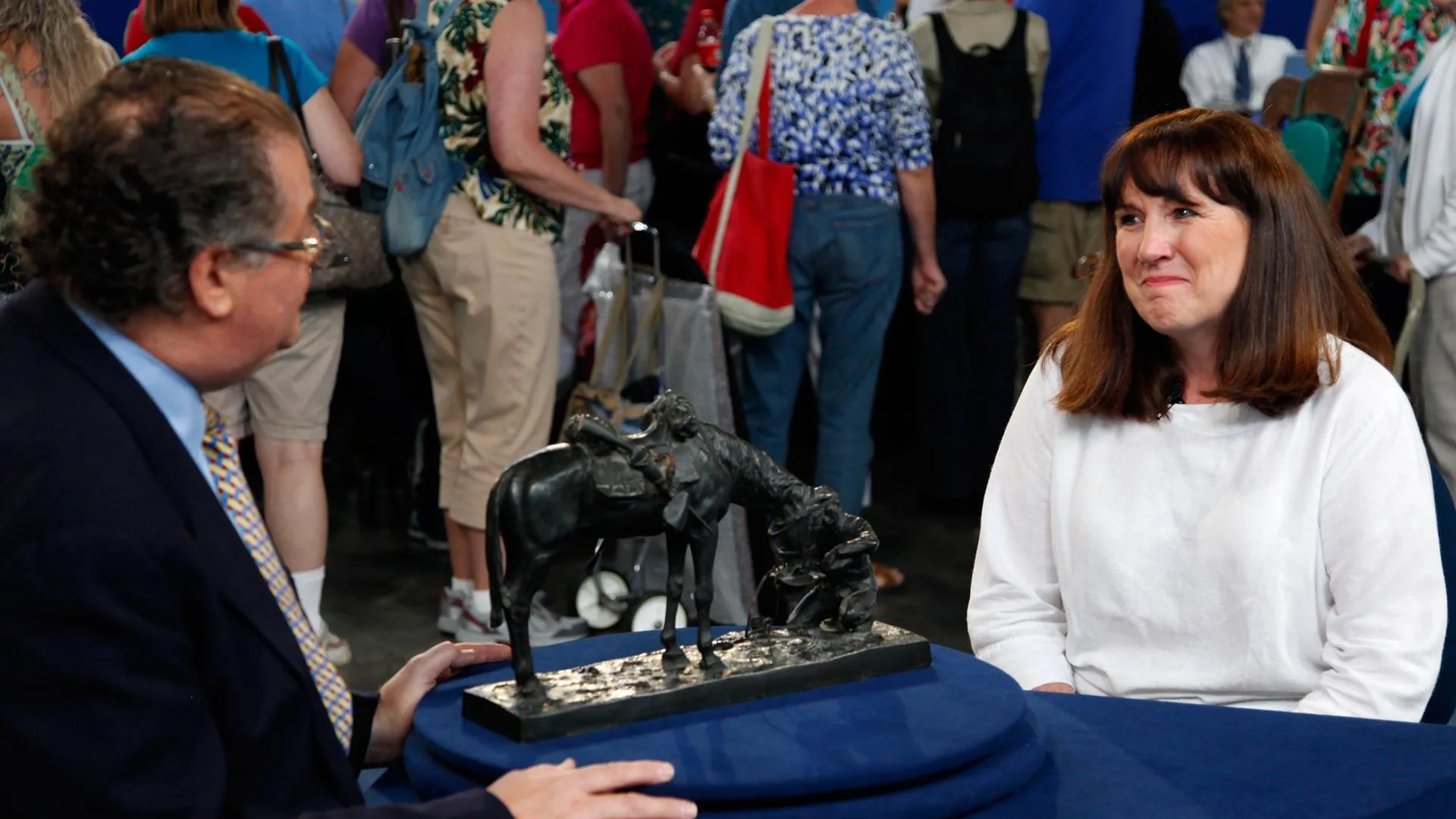GUEST: I bought it at a flea market in Gloucester, Virginia. I had seen it maybe a week prior to when I had bought it. I went home and I thought about it and I came back the following week and the lady still had it. And I told her I was going to the Antiques Roadshow, so... I said I needed something to take. I said, "That looks like the ticket right there." The lady, she was hesitant, but she sold it to me.
APPRAISER: And you paid how much for it?
GUEST: I paid $70.
APPRAISER: Well, those are, I guess, penguins walking around the side of it.
GUEST: The lady who sold it to me told me that a professor had told her that they're rockhopper penguins from Antarctica.
APPRAISER: Well, what I don't know about penguins is a lot, but I think I know a few things about this piece. This is a piece of Avon pottery from Wheeling, West Virginia, dating to about 1902 or 1903. There's no artist signature on it, there's no mark on the bottom of the piece, and often Avon is not marked. But there are several things that denote this as an Avon piece. Number one, the shape is an Avon shape. They did not make that much art pottery, and they had relatively few shapes in production for the two years they were making art pottery at this level. They did a number of different types of designs at Avon, mostly floral designs, but when I saw the penguins, I knew it was the work of Frederick Rhead. He was a young man who was hired away from the Wardle Company in England, where he was the art director at 19 years of age. His friend William P. Jervis was working at Avon and hired Rhead to come to the United States, where Rhead stayed for the rest of his career. And Rhead went on from Avon to Roseville to Weller to his own pottery in Santa Barbara to Homer Laughlin, where he designed Fiesta ware. So Rhead was a pretty famous guy. But early on, Rhead was doing his own stuff, and this is a piece that Rhead decorated with squeeze-bag technique. There's slip-trail outlines to the decoration. There's also what we call sgraffito technique, where he actually incises lines and then works within those lines, almost like a cloisonnè technique. So this has all the earmarks of Frederick Rhead's decorative techniques and decorative style. But one of those elements is the weirdness of it, it's a kind of quirky, English-American Arts and Crafts style. This one is crude in a very sophisticated way. You can see the way the glaze is uneven on the piece. The birds are not all consistent because they're hand done. Some are pudgier than others. A very unusual, peculiar and, I find, oddly appealing piece of Rhead's work at Avon Pottery. The fact that it's not marked or not signed really doesn't matter much, because people who know Rhead's work know what this is, and his signature is in the work. At auction, I would estimate this for between $2,000 and $3,000 and probably more like $2,500 to $3,500. But to be a little conservative, I think $2,000 to $3,000 at auction is what this piece would be worth.
GUEST: Well, I did good.
APPRAISER: You did really well.











